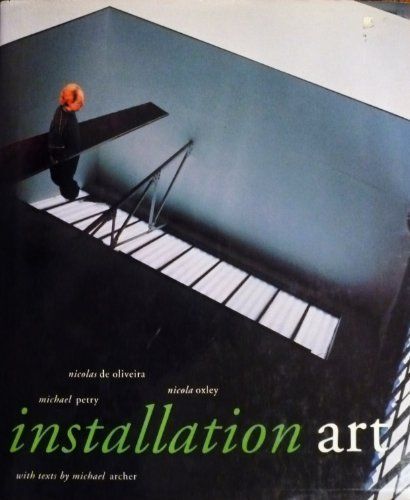
Installation Art
Installation is arguably the most original, vigorous, and fertile form of art today. No large-scale survey or festival of contemporary art would be complete without examples of installation, and it is these that usually attract the greatest attention and cause the most controversy. Yet this is the first book ever to describe the tradition and explore the achievements and ambitions of the installation artist. Michael Archer's illuminating introduction traces the history of installation art from Duchamp's first readymade through the Pop tableaux of Kienholz, Oldenburg, Kaprow, and Dine to more recent developments such as Land Art and Process Art. This is followed by a global range of installations, presented and documented by Nicolas de Oliveira, Nicola Oxley, and Michael Petry. All these works share a theatrical power and an insistence that the viewer be involved, from Christian Marclay's floor carpeted with LPs and Jenny Holzer's pulsating LED screens with their enigmatic messages, to Lothar Baumgarten's haunting memorial to Native American tribes and Hiroshi Teshigahara's tranquil tunnels of bamboo. The pieces are grouped into four sections, with more than 260 illustrations: site works from artists such as Christo, Richard Wilson, James Turrell, and Hans Haacke; media works by Wolf Vostell, Meg Cranston, Joseph Kosuth, Nam June Paik, and others; the museum works of Barbara Bloom, Mike Kelley, Cary Leibowitz, Ange Leccia, and their peers; and architectural works by practitioners including Rachel Whiteread, Daniel Buren, Mario Merz, and Vong Phaophanit. Authoritative reference material includes a chronology which details the history of installation from its roots in the late nineteenth century to today and an extensive bibliography. Installation is a rich art form, often heroic in scale, sometimes witty and subversive, usually impermanent. This pioneering volume captures fully the variety and scale of these many-layered works - the essential contemporary record of a vibrant, fast-changing discipline.